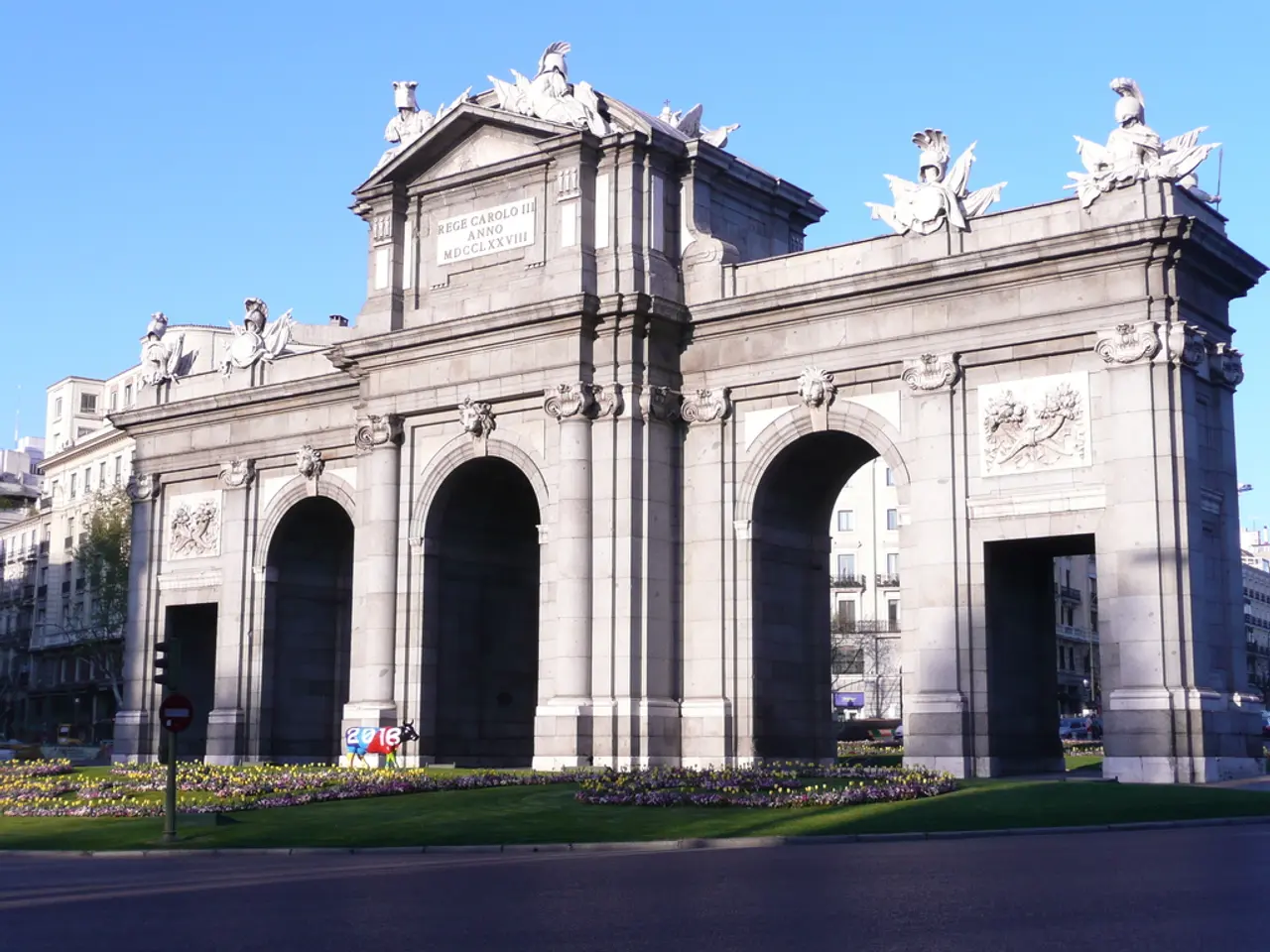Voyage of the Devotee: A Pilgrim's Trek
In the northern corner of the Monastery of Leça do Balio, a new architectural marvel has emerged. Completed in June 2024, the white-concrete pavilion, designed by renowned architect Álvaro Siza, adds a contemporary touch to the historic monastery, which has been a national monument since 1910.
Measuring 20 by 20 meters, the geometric pavilion, known as *Siza's Open Sculpture*, is an ecumenical space designed to support introspection and reflection, highlighting the monastery’s historical role in assisting pilgrims on the Portuguese Way to Santiago.
### Design Details
The pavilion's material of choice is white concrete, a testament to Siza's architectural language - austerely elegant, contextually sensitive, and profoundly poetic in light manipulation. The interior is minimalistic, emphasizing the purity of the white concrete and the play of natural light.
The pavilion features an outdoor patio and a more sheltered, reserved covered area. The design emphasizes the role of natural light throughout the day, creating a dynamic and contemplative environment inside. Openings in the tower and roof of the pavilion create areas of changing daylight and shadow within the interior.
### Interior and Experience
The pavilion serves as an open sculpture, merging architectural form with spiritual and communal functions. The entrance to the pavilion is located between a pair of symmetrical volumes that function as lightwells.
The Wayfarer sculpture, a 1.8-metre-high sculpture designed by Siza, is situated at the centre of the courtyard in the pavilion. The sculpture references the physical and spiritual journey of pilgrims along the nearby Way of Saint James, or Camino de Santiago.
### Connection with the Church
The pavilion that houses the Wayfarer sculpture has a connection with the church within the Monastery of Leça do Balio. It is part of the geometric garden belonging to the monastery.
The Monastery of Leça do Balio, situated on the banks of the Leça River, north of Porto, is also home to the Livraria Lello Foundation. This pavilion adds another layer of historical significance to the site, further emphasizing its importance as a stopover for pilgrims on the Way of Saint James.
While detailed imagery or architectural drawings are not readily available, footage and visuals shared by architectural workshops and exhibitions suggest a clean, modernist interior that respects the monastery's heritage while offering a contemporary spatial experience.
Visiting the site during Open House Porto or following official releases by Fundação Livraria Lello or Álvaro Siza’s studio is recommended for those seeking more detailed imagery or architectural insights.
The pavilion's design, titled "Siza's Open Sculpture", not only combines contemporary architecture with the monastery's historical role, but also incorporates elements of cultural travel, as it references the Way of Saint James and offers a reflective space for pilgrims and visitors. This architectural marvel, nestled within the Monastery of Leça do Balio, also forms a connection with the church and the Livraria Lello Foundation, further enhancing its significance as a stopover for travelers on the Way of Saint James, thus blending travel, lifestyle, and cultural-travel experiences.





